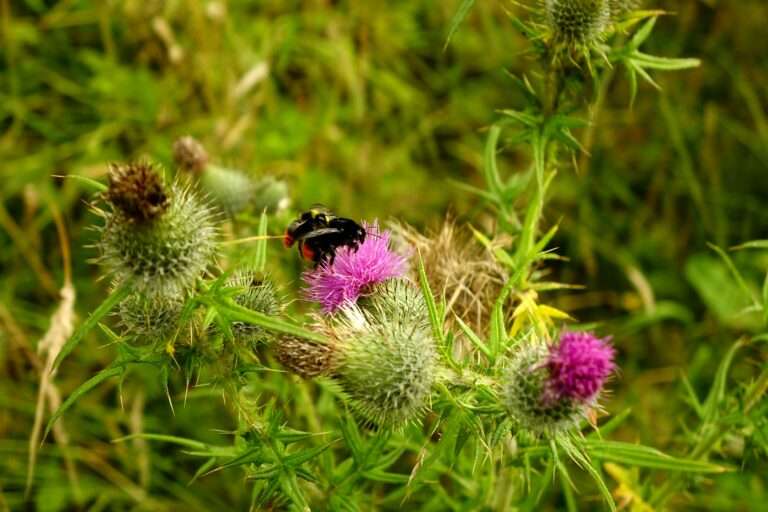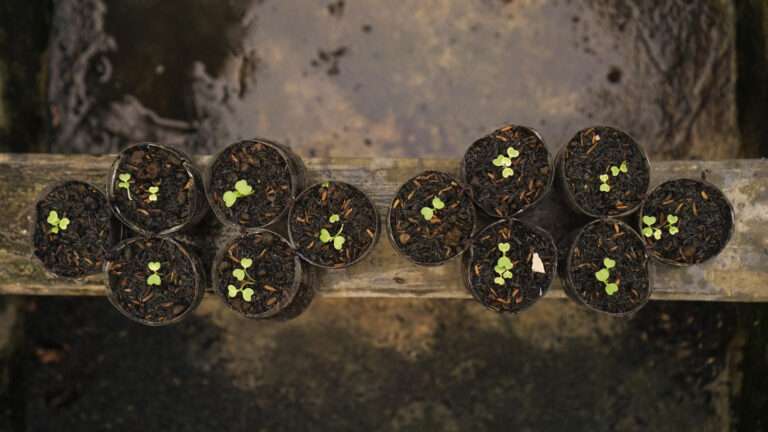How Bird and Bat Box Schemes Are Boosting Biodiversity on Development Sites
Walk across a new housing estate or a freshly landscaped business park and you’ll probably notice the tidy lawns, the young trees, maybe even a pond if the developer’s gone the extra mile. But look closer – right up near the rooflines or tucked beneath eaves – and you might spot something small yet significant. A bird box. A bat brick. Tiny features, yes, but quietly vital ones.
They’re part of a bigger story: how modern development is beginning to accept that concrete and ecology don’t have to be enemies. For too long, building projects have stripped away the habitats wildlife depends on. Old trees felled, barns sealed, hedgerows levelled. In their place, shiny façades and hard landscaping. Functional for humans, barren for everything else.
That’s finally changing. Biodiversity is now a measurable target in UK planning – not just a nice idea. And one of the simplest, most cost-effective ways to support that goal is through structured bird and bat box schemes.
They’re not decorative. They’re deliberate. And when done properly, they make a measurable difference.
Why Developments Need Biodiversity
Every development – from housing to highways – alters the local ecosystem. The land that once supported hundreds of insects, nesting birds, and pollinators becomes compacted, paved, and fenced off. Wildlife doesn’t just “move on”. It often has nowhere to go.
That’s where the concept of Biodiversity Net Gain (BNG) comes in. Under current UK planning law, most developments must deliver at least a 10% improvement in biodiversity value compared to what was there before.
It sounds simple on paper, but achieving it means creating functional habitats – not just pretty landscaping. Native planting, ponds, wildflower strips, and yes, bird and bat boxes all count toward that total.
They’re small elements that multiply in impact when installed strategically.
The Case for Bird and Bat Box Schemes
Boxes work because they replace what’s been lost. Traditional rooflines once offered cavities for swifts and sparrows; mature trees provided hollows for owls and roosting bats. Modern construction seals those spaces tight.
Purpose-built boxes mimic those natural niches. They’re not a gimmick – they’re habitat infrastructure.
In my experience, well-designed schemes also bring subtle social benefits. People notice swifts screaming over rooftops at dusk or watch blue tits feeding their young in spring. It connects residents with their surroundings in a way a perfectly mown lawn never will.
Let’s be clear, though: sticking up a few boxes as an afterthought isn’t a “scheme”. A proper biodiversity scheme means ecological planning – mapping, species selection, orientation, maintenance, and monitoring. The aim isn’t just compliance; it’s measurable ecological uplift.
What a Bird and Bat Box Scheme Involves
1. Ecological Survey and Site Assessment
Before a spade hits the ground, ecologists assess existing habitats. Are there swifts nesting in nearby buildings? Bats foraging along a hedgerow? These details shape what type of boxes are needed and where they should go.
An assessment might reveal, for instance, that pipistrelles already use the area. That’s your cue to install roost boxes near their flight lines, ideally 4–5 metres high on south or west-facing walls.
2. Species Selection
Each box design caters to a different species, and not every species suits every setting.
| Species | Box Type | Placement Height | Ideal Orientation | Typical Setting |
|---|---|---|---|---|
| Swift | Swift brick | 5m+ | North or east | Multi-storey buildings, schools |
| House sparrow | Sparrow terrace | 2–5m | East or north-east | Eaves, terraces |
| Starling | 45mm hole box | 3–5m | East | Urban and suburban |
| Pipistrelle bat | Bat box/tube | 3–5m | South or west | Woodland edge, buildings |
| Brown long-eared bat | Large bat box | 3–4m | East | Trees, barns |
Choosing the right mix prevents competition and ensures that boxes are more than token gestures.
3. Integration into Building Design
This is where many developments are getting smarter. Instead of surface-mounted boxes that weather and fail over time, integrated swift bricks and bat tubes are now being built directly into the walls.
They last as long as the building itself and are practically invisible once installed. They also meet planning requirements without affecting design aesthetics – a win for architects and ecologists alike.
You can find examples of these integrated systems on our page about bird and bat box installation, which explains how they form part of wider biodiversity strategies.
4. Placement Strategy
Strategic placement matters more than sheer numbers. Boxes should be sited close to suitable feeding areas – trees, hedgerows, ponds, or meadows – and away from bright lights or vents.
For instance, bat boxes on a brightly lit warehouse façade won’t attract anything. Place them on the shaded side near vegetation, and suddenly you’ve created a viable roost.
5. Monitoring and Maintenance
Monitoring shouldn’t be an afterthought. Annual inspections by qualified ecologists help ensure boxes are being used and identify adjustments needed for future phases.
It’s also good PR. Developers can include biodiversity data in sustainability reports or community updates – tangible evidence of ecological responsibility.
Planning Policy and Biodiversity Net Gain
Local planning authorities are increasingly specific about biodiversity measures. Some, like Brighton, require swift bricks in all new residential developments. Others, such as Nottingham, recommend a minimum number of bird or bat boxes per dwelling.
BNG metrics make it easier to quantify success. A set of 20 boxes across a medium-sized site might not seem dramatic, but in ecological terms, that’s twenty breeding sites or roosts that didn’t exist before.
Even small-scale schemes can make a measurable contribution to species recovery targets.
Practical Advice for Developers and Contractors
I’ve seen great intentions ruined by rushed installation. So, a few real-world notes:
- Coordinate early. Involve ecologists and architects at RIBA Stage 2 or 3 – not after construction starts.
- Avoid retrofit panic. Retrofitting boxes to finished walls often results in poor orientation or aesthetics.
- Pick durable materials. Concrete or wood-crete boxes last decades; cheap timber ones rot within a few years.
- Think vertically. Use different elevations and heights to suit multiple species.
- Record and report. Keep GPS coordinates and installation notes. It helps with planning compliance and long-term monitoring.
Done right, a scheme adds minimal cost relative to total project value – yet yields visible ecological benefits.
Case Example – Brownfield Redevelopment
A brownfield regeneration site in Sheffield installed 80 integrated swift bricks, 30 sparrow terraces, and 20 bat tubes as part of its BNG obligations. Within two years, monitoring recorded over 40 active nests and consistent bat roosting.
The biodiversity unit uplift exceeded the 10% requirement, largely due to these simple, passive structures.
It’s not just about hitting a target. It’s about leaving something behind that keeps living.
Public and Social Benefits
Biodiversity enhancements aren’t just for the wildlife. Residents benefit too. Developments that include visible habitat features – wildflower verges, nesting boxes, green roofs – consistently rank higher in occupant satisfaction surveys.
People enjoy living where nature feels present. There’s an emotional comfort in birdsong and movement that sterile estates lack.
From a planning perspective, visible ecology also softens the look of new builds. It’s good optics for developers and councils alike.
And there’s the educational side. Schools built with visible swift bricks or monitoring projects teach pupils early that humans share space with other species. It builds awareness, not guilt.
Common Misconceptions
There’s always scepticism. A few classics worth addressing:
- “It’s just greenwashing.” Only if done badly. Measured, monitored schemes are scientifically legitimate biodiversity interventions.
- “Bats cause mess or noise.” They don’t. They’re silent, clean, and beneficial – each pipistrelle can eat 3,000 insects a night.
- “It’s too expensive.” An integrated brick costs less than a wall tile.
- “Boxes ruin the look.” Integrated designs are practically invisible once installed.
These objections are fading fast as real-world data proves their value.
Combining Box Schemes with Broader Habitat Works
Boxes work best as part of a broader ecological framework.
Planting native trees, adding wildflower corridors, and creating water features all complement nesting and roosting provisions. Together, they form the green infrastructure that connects fragmented landscapes.
Developments that think holistically – treating biodiversity as infrastructure, not decoration – deliver far higher ecological returns.
The result? Sites that feel alive rather than manufactured.
Quick Reference Table – Ideal Placement Overview
| Feature | Bird Boxes | Bat Boxes | Typical Height | Direction | Setting |
|---|---|---|---|---|---|
| Residential housing | Swifts, sparrows, tits | Pipistrelles | 3–5m | North or east | Eaves, gables |
| Commercial buildings | Starlings, kestrels | Noctules | 4–6m | South or west | Roof edges, façades |
| Schools & public spaces | Swifts, robins | Long-eared bats | 3–5m | NE or SW | Courtyards, gym walls |
| Rural edge | Owls, wrens | Daubenton’s bats | 3–8m | East | Trees, barns, poles |
Again, it’s not about blanket numbers – it’s about ecological fit.
Long-Term Thinking
The true test of any biodiversity feature is whether it lasts. Integrated boxes require almost no upkeep and stay functional for decades. External boxes might need replacement after ten years, but by then they’ve already supported multiple generations of wildlife.
More importantly, they demonstrate a shift in mindset. Developers once focused solely on carbon footprint and drainage. Now, biodiversity has equal weight.
That’s progress worth celebrating.
Conclusion
Enhancing biodiversity on development sites isn’t about token gestures. It’s about acknowledging that every project leaves a footprint – and choosing to make it a living one.
Bird and bat box schemes prove that small interventions can achieve large ecological gains. They restore lost habitats, support planning compliance, and improve the quality of places we build.
It’s a quiet kind of progress. No grand statements. Just a few boxes, carefully placed, giving life where there might otherwise be none.
Killingley Insights is the editorial voice of NT Killingley Ltd, drawing on decades of experience in landscaping, environmental enhancements, and civil engineering projects across the UK.








